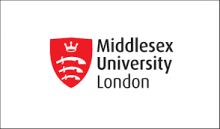
Construction Planning Surveys
Construction Planning Surveys
Our construction planning tree surveys are carried out according to BS5837:2012. We can provide Tree Constraints, Arboricultural Implications and Tree Protection advice either as a full, integrated service or as stand-alone units tailored to suit your requirements. Or advice can include assistance with foundation design, mitigation proposals, new planting schemes and opportunities for habitat preservation or enhancement where appropriate.
The BS5837:2012 Process
BS5837:2012 is the British Standard for Trees in relation to design, demolition and construction.
It is mandatory to comply with BS5387 when considering any development project in the vicinity of trees, whether or not planning permission is required.

The Process Explained
The stages of the process are as follows:
- The Tree Survey & Plan (TSP): a survey of the trees in order to establish their condition and amenity value. The survey includes all trees within and outside the development area that may be affected by the proposal. The TSP plan is then drawn on a topographical survey plan usually supplied to us by the client or their representative.
- The Tree Constraints Plan (TCP) shows the following for each tree: accurate position, reference number, crown spread, tree quality assessment, root protection area and basic shade footprint throughout the day.
- The Arboricultural Impact Assessment (AIA): determines the site-specific effect of a planned development on the existing tree stock. It highlights the conflicts between retained trees and the planned development.
- The Tree Protection Plan (TPP) and Arboricultural Method Statement (AMS): describe how construction works can be carried out close to trees without causing damage to the crown or the root system. The AMS describes how the trees will be adequately protected during the works.

Proposals Advice
Our construction planning tree surveys are conducted according to the tree categorisation and root protection area (RPA) calculation methods described in BS5837:2012. At an early stage Tree Constraints, including those represented in the revised National Planning Policy Framework (2018, updated 2019) are considered and initial tree retention advice provided.
As site proposals develop, this can crystallise into a full Arboricultural Impact Assessment leading ultimately to a detailed Tree Protection Plan and Arboricultural Method Statement.
Our advice can include foundation design recommendations, mitigation proposals, new planting schemes and opportunities for habitat preservation or enhancement where appropriate.

Our Role
We like to be engaged as ‘project arboriculturists’ as it’s in this role that we can make the biggest impact. We’re also happy to provide ‘stand-alone’ services where needed. Data is captured electronically in the field producing an instant readout on tree categorisation. Plans are prepared using CAD software and presented in both .dwg and .pdf formats; reports are supplied in .pdf format (paper copies can be provided if needed).
We have wide-ranging experience of providing support through the planning and construction process. The detailed analysis that tree protection demands necessitates the use of high-quality site plans and drawings. To avoid un-necessary delays to your project please see the bottom of this page to read our minimum site plan requirements for our service.





Let's Talk Today
We would love to hear from you, please get in touch if we can help or you would like to hear more about our services.
What our Clients say
It's extremely important to us that our Clients are 100% satisfied with all work that we carry out, here is just some of the feedback that we have collated from our client portfolio...
We always prefer to stay with contractors we know and trust and Richard is certainly one of these. First class. No need to say more, really.
Minimum requirements for our service:
- For a fee estimate:
Client’s full name, address and contact details.
Full site address or OS Grid Reference.
Indication of the site red line boundary on an aerial view.
Preliminary site drawings / sketches pending provision of other plans later as described below. - For the Tree survey we require one of the following, in order of preference:
Topographical survey, or
Hi-resolution (25cm or higher resolution) aerial photograph, or 1:200 to 1:2500 OS Planning Map.
We can assist with obtaining the latter two. The plan must show the site, plus any ground outside the boundary containing trees that could be affected by the proposal. - For Tree Constraints, Arboricultural Implications and Tree Protection assessment we require:
Proposed AND existing site layouts drawn using CAD software on the topographical survey or other suitable site plan. The scale must be the largest possible in the range 1:200 – 1:2500. File format must be CAD compatible .dwg or .dxf. The plan or plans must show the WHOLE site plus any ground
outside the boundary containing trees that could be affected by the proposal. - Any of these documents can be provided as a ‘stand alone’ service
We can provide initial constraints and tree retention advice to inform the planning process but can join planning teams at any project stage.